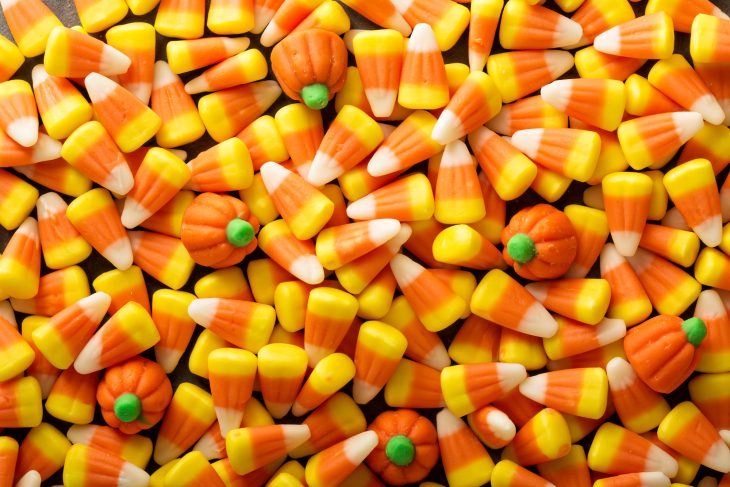
Nothing quite heralds the arrival of fall and the Halloween season like candy corn. These sweet, tri-colored treats are a favorite among many during this festive period. But have you ever wondered about the nutritional aspect of these tiny delights? In this comprehensive article, we are going to unwrap 20 candy corn nutrition facts that will provide you with an understanding of what goes into this iconic candy.
Basic Composition
Let’s start with the basics. Candy corn consists mainly of sugar, corn syrup, confectioner’s glaze, salt, dextrose, gelatin, and sesame oil. Colors and natural flavors are also added to achieve its characteristic look and taste.
Calorie Content
A serving size of candy corn, which is about 19 pieces, contains around 140 calories. While it might seem like a low-calorie treat, keep in mind that these calories come almost exclusively from sugar.
High in Sugar
Candy corn is a sugar-heavy food. A single serving contains about 28 grams of sugar. To put it into perspective, that’s equal to about seven teaspoons of sugar!
Lack of Essential Nutrients
Candy corn does not offer significant amounts of vitamins, minerals, protein, or fiber. It’s what nutritionists often refer to as an “empty calorie” food.
Fat Content
One of the lesser-known candy corn nutrition facts is that it’s a fat-free food. It contains 0 grams of fat per serving.
Sodium Content
Although it’s a sweet treat, candy corn does contain a small amount of sodium – approximately 70 milligrams per serving.
Free of Cholesterol
Candy corn is cholesterol-free, which can be a plus for those monitoring their cholesterol intake.
Gluten-Free
For those following a gluten-free diet, candy corn is a safe choice. It does not contain wheat, barley, or rye.
Allergen Information
The traditional recipe for candy corn does not include nuts or dairy, making it a suitable option for individuals with these common food allergies.
Contains Gelatin
Gelatin is used in candy corn to give it its chewy texture. This ingredient is derived from animal products, which is something to be aware of if you follow a vegetarian or vegan diet.

Long Shelf Life
Thanks to its high sugar content and lack of dairy ingredients, candy corn has a long shelf life. It can last up to nine months if stored in a cool, dry place.
Energy Density
Candy corn is a high-energy-dense food. This means it provides a lot of calories (energy) relative to the serving size.
Versatile Ingredient
While not a nutritional fact per se, it’s worth noting that candy corn’s sweet flavor and colorful appearance make it a versatile ingredient in various Halloween-themed desserts and snacks.
Low in Protein
Candy corn contains a minimal amount of protein – less than 1 gram per serving.
Contains Sesame Oil
Sesame oil is included in the ingredient list of many candy corn brands. While it’s a minor ingredient, it’s worth noting for anyone with a sesame allergy.
No Fiber
Candy corn does not contain dietary fiber. This means it won’t help contribute to your daily fiber intake goals.
Different Sizes, Same Nutrition
Whether you prefer the traditional-sized candy corn or the larger “jumbo” size, the nutritional content remains the same.
Seasonal Availability
While candy corn is primarily available during the fall season, its nutrition facts remain consistent year-round. So, whether you’re enjoying it in October or have managed to find it in April, you can expect the same nutritional profile.
Brach’s Candy Corn
Brach’s, a popular candy corn brand, follows the standard candy corn nutritional profile closely. Its candy corn contains about 140 calories, 0 grams of fat, 70 milligrams of sodium, and 28 grams of sugar per serving.
Jelly Belly Candy Corn
Jelly Belly, another well-known brand, offers candy corn with similar nutritional stats. A serving of Jelly Belly candy corn contains 140 calories, 0 grams of fat, and 28 grams of sugar.
Conclusion
Unwrapping these 20 candy corn nutrition facts shows us that while candy corn is a delightful treat, it’s one to enjoy in moderation due to its high sugar content and lack of essential nutrients. Whether you’re enjoying a few pieces as a sweet end to your Halloween celebrations or using them to add a festive touch to your fall recipes, it’s always helpful to know the nutritional content of the foods you’re eating. Happy snacking!
Was this page helpful?
Our commitment to delivering trustworthy and engaging content is at the heart of what we do. Each fact on our site is contributed by real users like you, bringing a wealth of diverse insights and information. To ensure the highest standards of accuracy and reliability, our dedicated editors meticulously review each submission. This process guarantees that the facts we share are not only fascinating but also credible. Trust in our commitment to quality and authenticity as you explore and learn with us.
